
Dimensional Research has just released a new report, The State of On-Prem: Modern Solutions for a Traditional Problem, based on a survey sponsored by replicated.
This report surveyed a total of 405 qualified participants from commercial software companies across 5 continents. The primary research goal was to understand and quantify the current use, need, and challenges for on-premises software and its deployments, as well as investigate the adoption of container-based applications and the use of Kubernetes.
Business and technology professionals at executive and manager seniority levels representing software companies of all sizes were invited to participate in this survey on their company’s software delivery options and use of containers.
The entirety of the report produced some fascinating data, but we picked out a few of our favorite takeaways for this article. Let’s dive into some of the more interesting results!
The State of On-Prem: Key Findings
On-Premises Software Continues to Grow to Meet Customer Needs
- 92% of companies indicate on-premises software sales are growing
- Customer demand for on-premises software equals public cloud
- 91% of customers are satisfied with the on-premises software
Despite what you may have heard, on-premises software sales and deployments continue to rise in the age of SaaS and the public cloud.
92% of companies surveyed indicated that their on-premises software business has grown over the past 5 years, with 50% of them reporting “strong growth.” Conversely, only 3% of companies reported that their on-premises software sales have decreased over that same time.
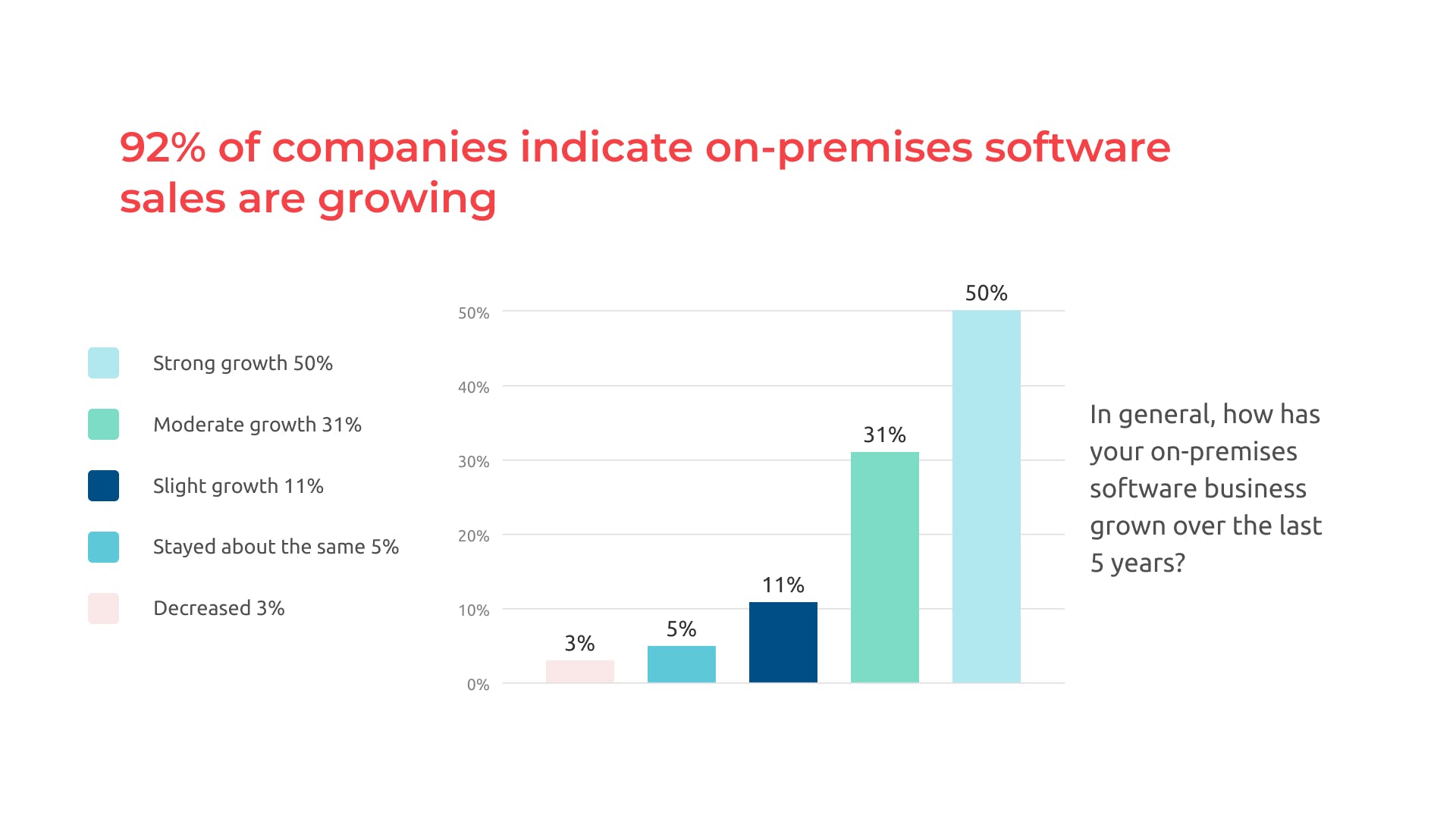
In that same vein, respondents reported that customer demand for on-premises software equaled that of public cloud offerings. Customer data center and private cloud deployments were requested at the same volume as public cloud options (AWS, Azure, Google Cloud, etc), and 34% of respondents confirmed that they also shipped air gapped deployments, further demonstrating the demand for data security and strict governance with the most security-sensitive of customers.
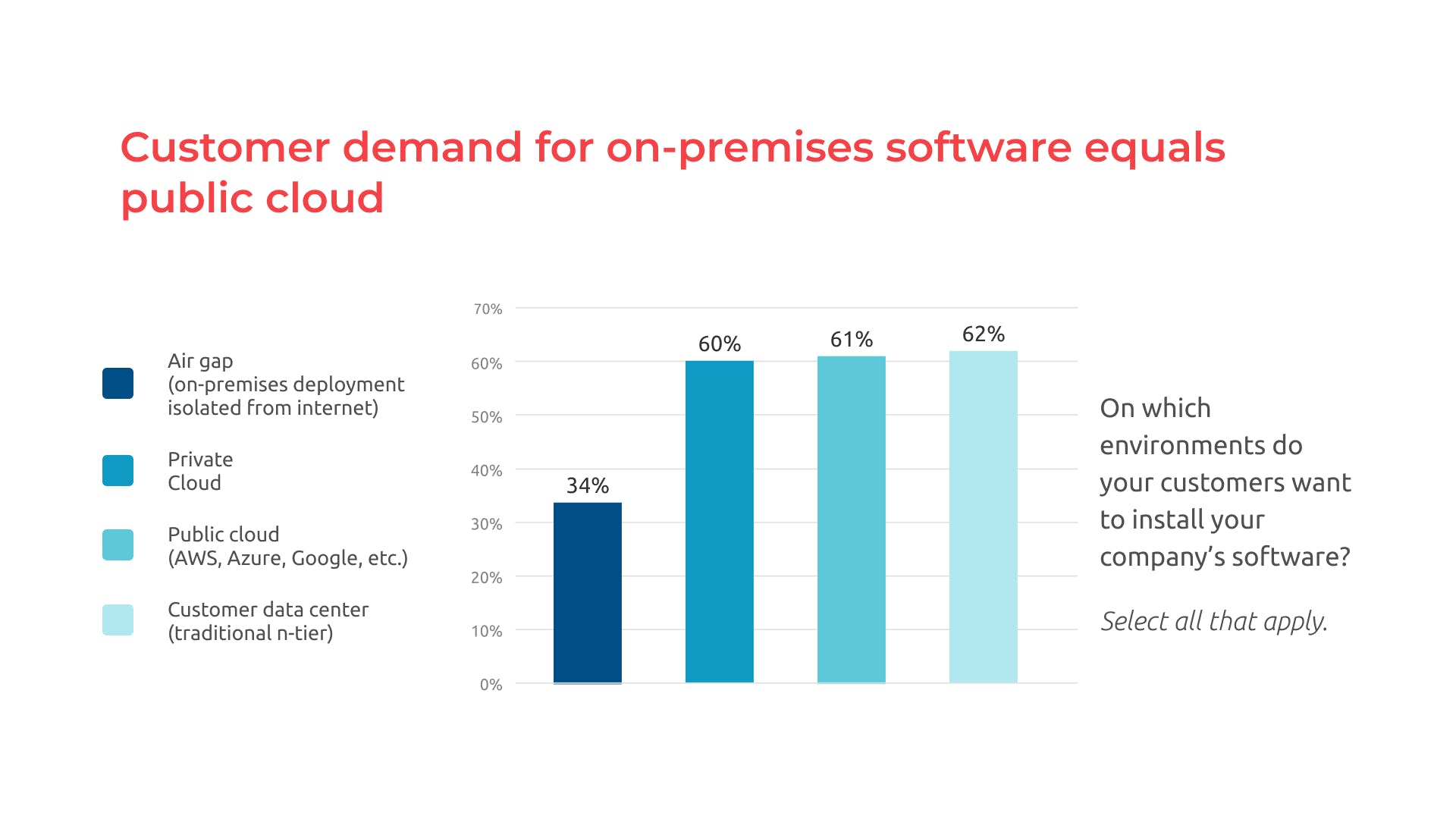
Not only is the demand for on-premises deployments high, but customer satisfaction among those running the software was, as well. 91% of respondents replied that their customers were satisfied with their on-prem software.
Perhaps most telling of all in regards to the benefits of providing an on-premises option, most companies surveyed reported that over 50% of their revenue came from their on-premises software deployments. Adding to that, 54% of companies providing an on-prem option reported that over half of their customers were deployed using on-premises solutions.
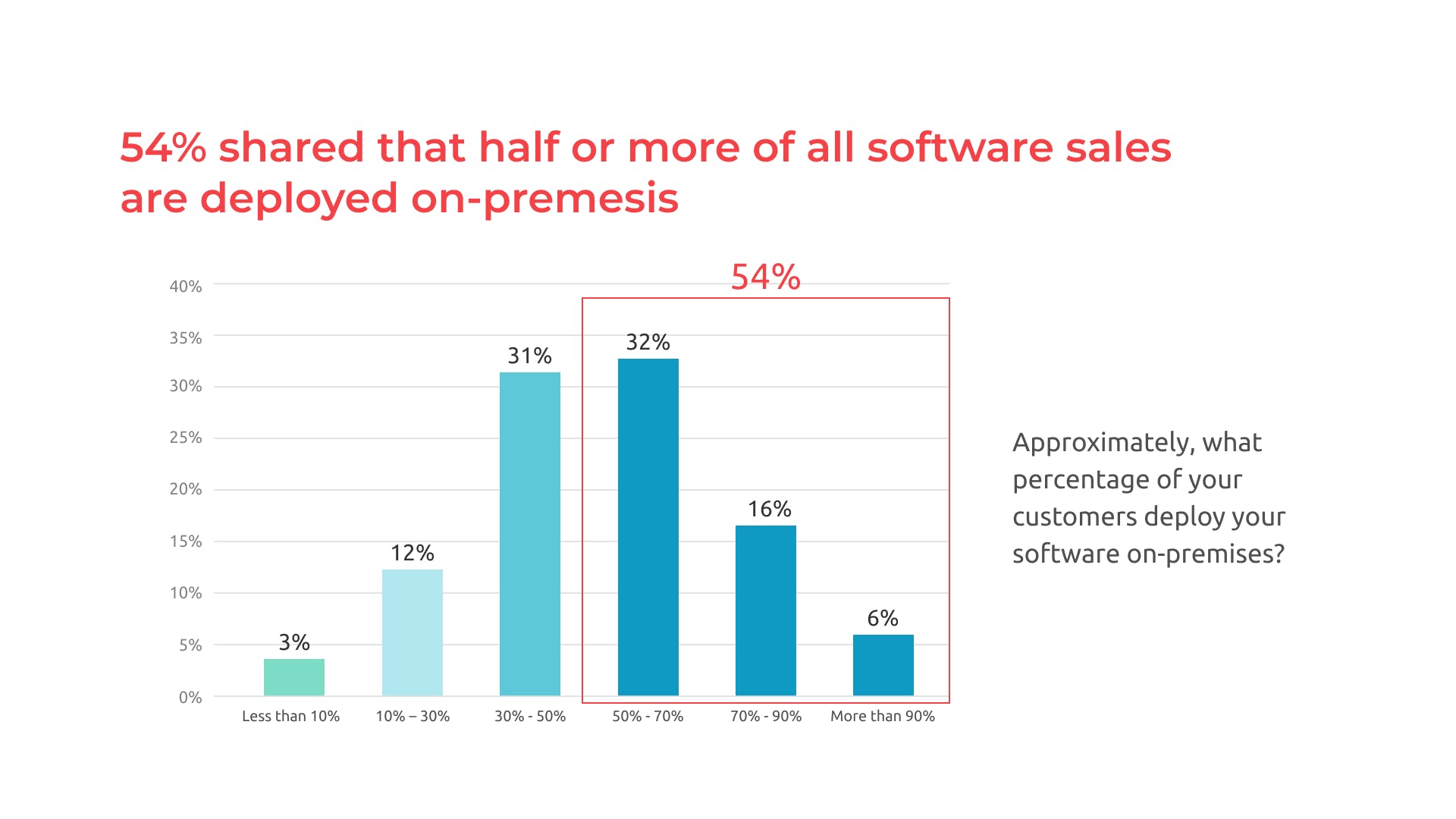
Container-Based Deployments Are the Norm
- 90% of companies use containerized applications in production environments
- 95% currently offer or plan to offer their software in containers
- 86% use Kubernetes for their on-premises software
The rise of containerization has been well known for years now, but this survey’s results hammered that point home. A staggering 90% of respondents reported that they are using containerized applications in their own production environments.
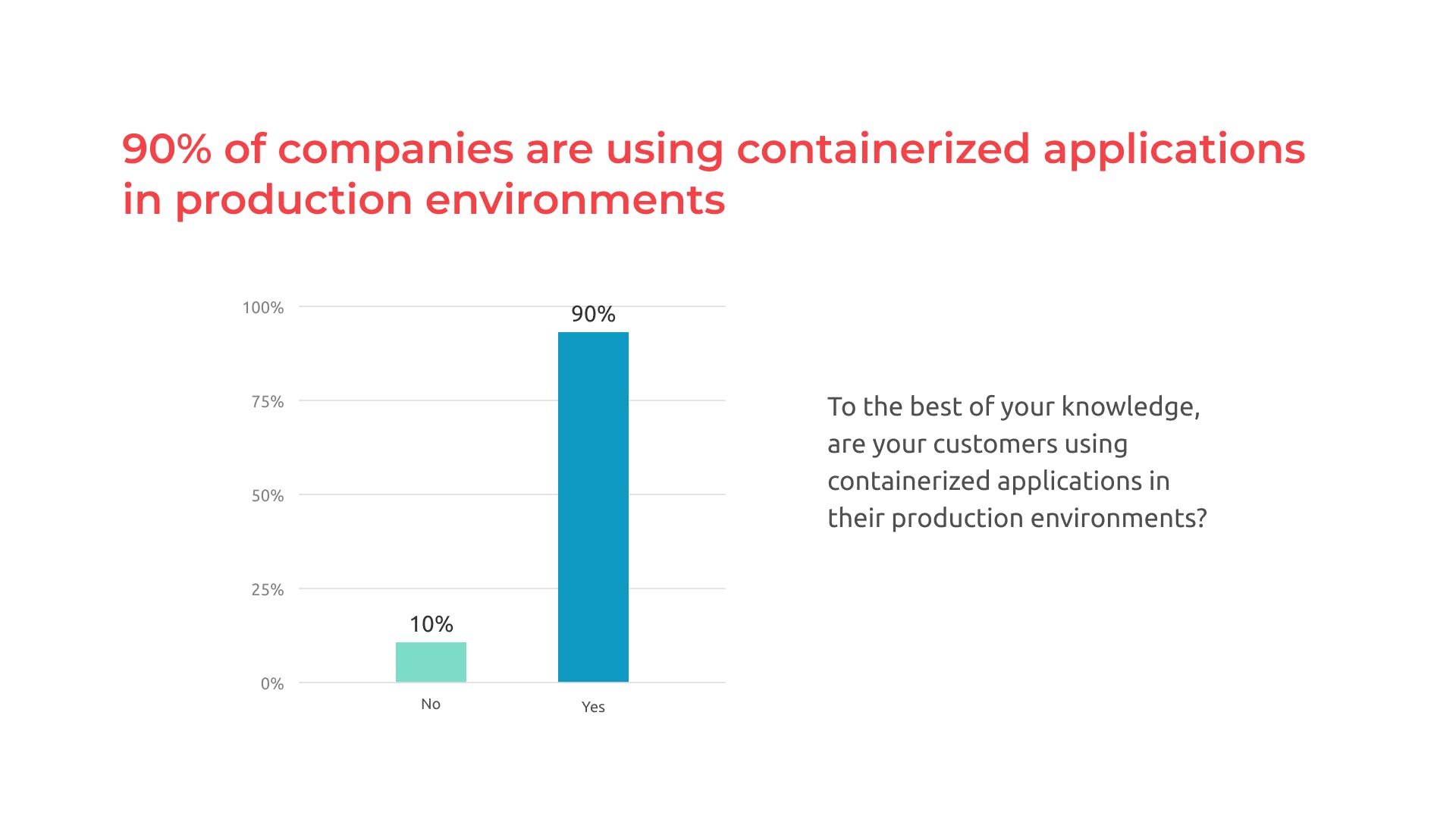
Sticking with that same trend, 95% of companies also reported that they are currently, or planning to, offer containerized versions of their software to customers. The de facto leader of container orchestration systems is unsurprisingly Kubernetes, with 86% of survey participants reporting that their companies are utilizing Kubernetes for their on-premises software.
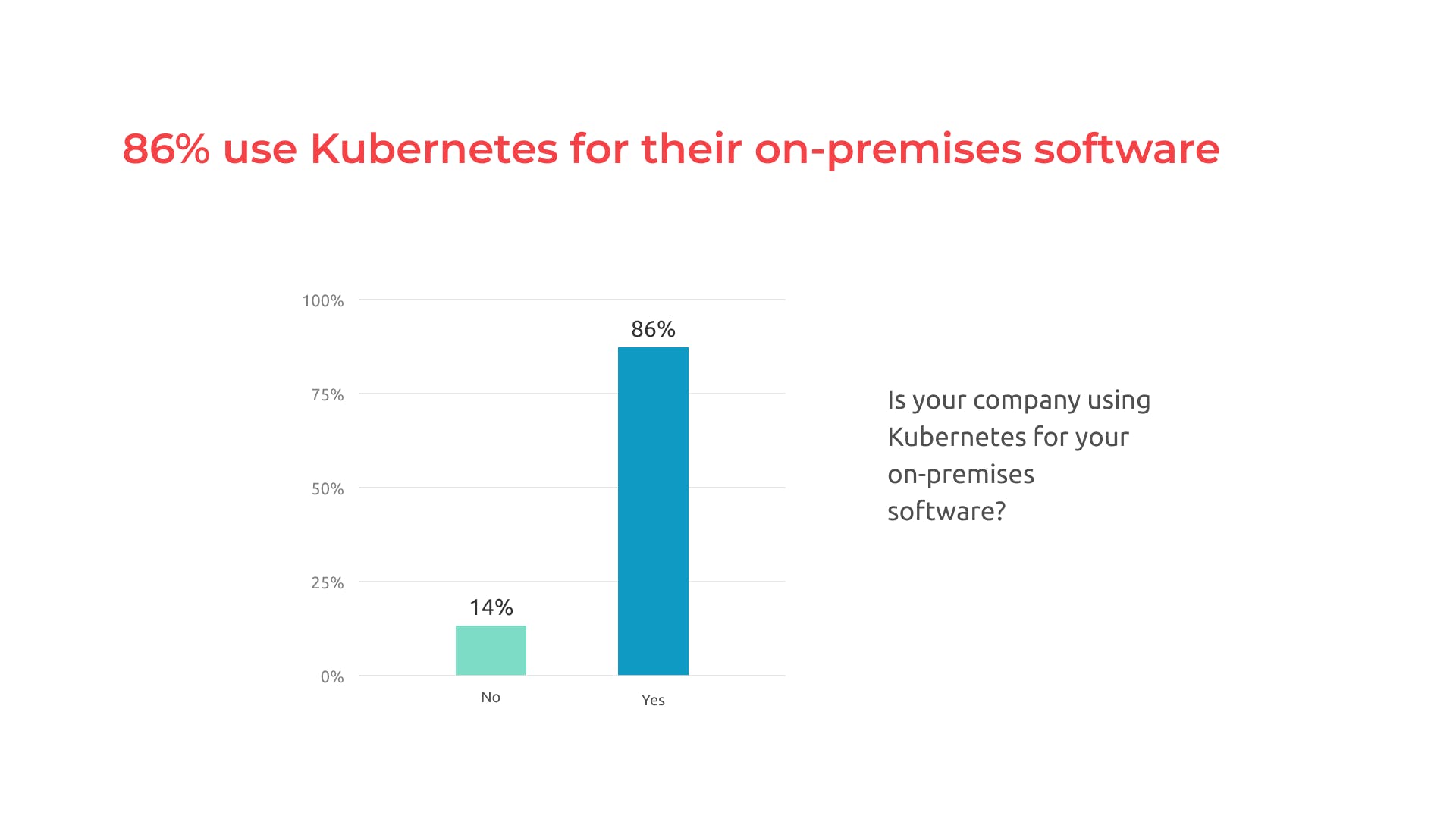
For context, Kubernetes, or K8s, has experienced increased popularity among the developer community over the past few years and has been a widely embraced evolutionary step in application architecture. Reasons for its quick and broad adoption include the move from infrastructure as code (JS, Ruby, Python, etc) to infrastructure as data, specifically YAML, ensuring every resource in K8s (pods, configs, deployment, etc) is expressed in YAML files. Changes like these vastly reduce the time and resources necessary to build and deploy maintainable software and promote best practices for inter-organizational collaboration through processes like GitOps. K8s is also open source, updated 3-4 times a year, and managed by the Cloud Native Computing Foundation (CNCF) to ensure a sustainable, long-term ecosystem.
On-Premises Software Deployments are Challenging and Slow
- 85% of customer still need help with container-based applications
- Numerous roles dedicated to ensuring customer success
- Only 16% of companies can deploy on-premises software in under a week
Perhaps least surprising is that many of these companies are still struggling with their on-premises software deployments. Time and resources, as well as the complexities that accompany building modern on-premises software, have made the process of building and deploying on-premises software tedious and time-consuming.
While Kubernetes remains popular and widely utilized, the difficulties that customers face when installing container-based applications are an ongoing struggle. 85% of respondents stated that their customers require support with container-based applications, further demonstrating that an industry-wide solution for streamlining the process isn’t widely utilized yet. 83% of those surveyed are dedicating multiple roles to the installation and management of their customers’ software, overwhelmingly in teams of 3 or more.
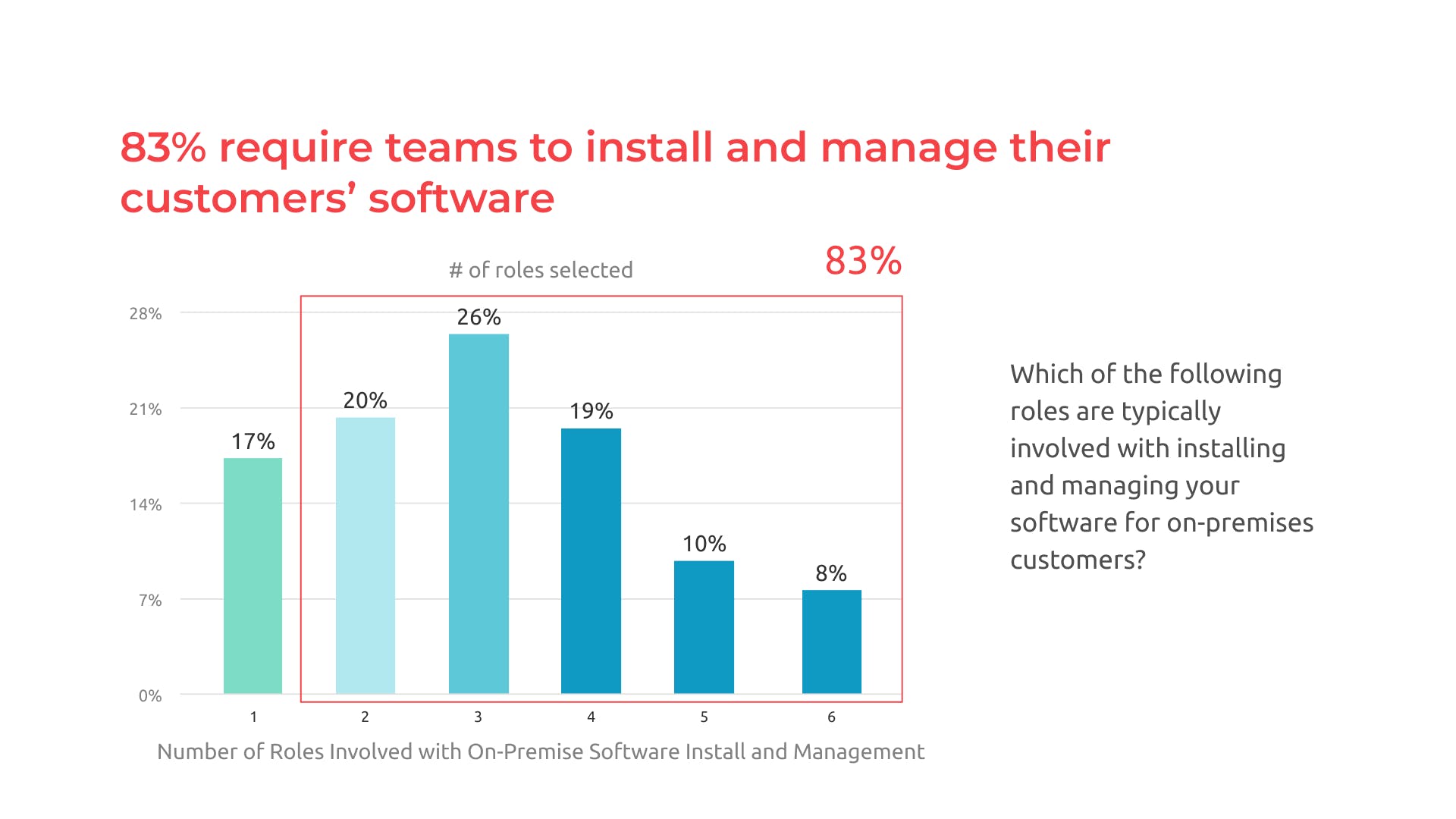
Finally, proving even more so that the process of installing and configuring on-premises software is complex, only 16% of respondents reported that their company can deploy on-premises software in under a week. These difficulties led some of the survey participants to respond that their company does not provide an on-prem option for just this reason. Furthermore, of the companies surveyed that do not provide an on-premises option for deploying their software, 57% reported that they are losing business as a result.

In Closing
The last 5 years have shown large leaps in the evolution of modern on-premises software, thanks in no small part to the rise of containerization and technologies like Kubernetes. What was originally thought of as archaic in the face of SaaS and the public cloud has now demonstrated its ability to provide modern scalability and unparalleled security for software vendors. One thing that this survey clearly shows is that on-premises software is here to stay, with bold new ideas and accessible means of application management leading the evolution of on-prem deployment.
But, the pains of deploying on-premises software have not been completely alleviated as teams still struggle to quickly and reliably deploy on-prem versions of their technology. Kubernetes remains a complex and time-consuming platform, and internal product and engineering teams are tasked with building and maintaining unique instances of their software while customer support engineers labor away at each individual customers’ containerized app. While containerization has seen increased prevalence, so have the issues that plague these software vendors looking to provide their customers with secure and scalable solutions.
We were fascinated by the results of this survey, The State of On-Prem: Modern Solutions to Traditional Problems, and invite anyone to dive deeper into the report. To download the report in its entirety, please click here.
We will also be hosting The State of On-Prem webinar with Dimensional Research in June 2021 to delve deeper into the results of this report. To sign up, please follow this link.
To learn more about how replicated can support your software with delivering modern on-premises applications, please click here to schedule a demo today